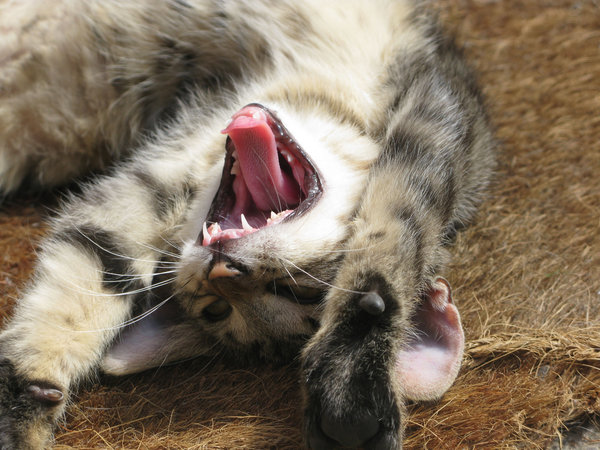The Future of Cat Litter: Technological Advancements
The Future of Cat Litter: Technological Advancements
Blog Article

Cat litter and litter boxes play a critical function in the lives of both cats and their owners. From the simple starts of sand and soil to the ingenious improvements of today, the world of cat litter has developed considerably. In this thorough guide, we dive into every aspect of cat litter and litter boxes, exploring their history, types, benefits, challenges, and everything in between.
The history of cat litter dates back centuries, with ancient civilizations using sand, soil, and even ashes as primitive litter materials. However, it wasn't until the mid-20th century that modern cat litter as we know it emerged. In 1947, Edward Lowe introduced the world's very first business cat litter made from absorbent clay, revolutionizing the way felines relieved themselves inside. Ever since, cat litter has gone through many improvements, with the intro of clumping litter, silica gel litter, eco-friendly choices, and more.
Today, cat owners are spoiled for option when it pertains to picking the best litter for their feline companions. Traditional clay litter remains popular for its price and efficiency in taking in odors. Clumping litter, which forms solid clumps when wet, streamlines cleansing and upkeep. Silica gel litter, composed of highly absorbent silica crystals, uses remarkable smell control and longevity. Biodegradable options, such as recycled paper, wood pellets, corn, and wheat, interest ecologically conscious consumers.
Each kind of cat litter provides distinct advantages. Clay litter stands out in its capability to take in moisture and control smells, making it a reputable choice for many feline owners. Clumping litter simplifies daily scooping and extends the time in between total litter modifications. Silica gel litter offers exceptional smell control and can last longer between replacements. Biodegradable litters use a sustainable alternative that minimizes ecological impact.
While cat litter boosts indoor feline hygiene, it is not without its cat litter robot obstacles. Dust from clay litter can present respiratory dangers for both cats and human beings, prompting the appeal of dust-free alternatives. Some felines might develop litter box hostility due to issues with texture, aroma, or cleanliness, demanding experimentation with different litters and box setups. Multi-cat homes may need strategic litter box positioning and frequent upkeep to prevent territorial conflicts and ensure all felines have access to tidy facilities.
Picking the appropriate litter box is necessary for promoting favorable litter box practices and total feline well-being. Aspects to consider consist of size, accessibility, and style preferences. Covered litter boxes offer personal cat litter robot privacy and assistance consist of odors, however some cats may discover them restricting or intimidating. Open-top litter boxes offer simple gain access to and exposure but might lead to more litter scatter. Automatic self-cleaning litter boxes improve upkeep but require regular tracking and maintenance.
Proper cat litter boxes litter box upkeep is vital for ensuring a tidy and welcoming environment for both cats and their owners. Daily scooping eliminates waste promptly, decreasing odor and dissuading litter box hostility. Regular litter replacement, generally every 1-2 weeks, avoids bacterial accumulation and maintains ideal absorbency. Extensive cleansing with mild detergent and water, preventing extreme chemicals that might discourage cats from utilizing package, should be performed monthly.
Cat litter and litter boxes play a central function in cultivating a healthy and harmonious relationship between cats and their human companions. With a varied array of litter choices and litter box styles available, cat owners have the flexibility to customize their options to suit their cats' preferences and home needs. By comprehending the advancement, types, advantages, and challenges of cat litter and litter boxes, animal owners can supply their feline good friends with a comfortable and hygienic indoor environment.